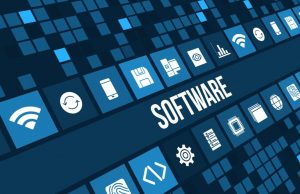In today’s world, doorbells can record, and watches can monitor heart rates. Software is already a part of everyday life at home and work, and its use is expected to grow exponentially. Many tasks that used to be done by humans are increasingly being accomplished by robots and algorithms.
Forrester Research estimates that from 2020 to 2030, software spending will increase globally from $920 billion to more than $1.3 trillion. Consumers and businesses will continue to clamor for the latest in technology, and with the ability to customize software to each person’s or company’s needs, the industry appears unstoppable.
The anticipated growth is also related to the increase in online populations, easier adoption and integration of software, and its use in customer service, product delivery, and other aspects of business. Physical stores are using more self-checkout lines, and online stores not only have software to run their websites but also robots to gather orders in their warehouses and drones to deliver them right to the customers.
However, even if $1.3 trillion sounds like a lot, Forrester reports “that the number actually reflects a paradoxical slowdown in software spending growth.” The estimated 4% annual growth over the next decade is much lower when compared with the 7% per annum in the period between 1995 and 2020.
So what are the reasons for this paradox? There are many factors, but first is that software will get cheaper. Customizing programs will be more efficient and lead to lower costs, and automation in the software development cycle will make the production of programs cheaper. Competition will increase, and while companies are vying for customers’ business, prices will come down.
An economic slump also seems likely for the early 2020s, which will lead to less spending due to a decrease in disposable income. All of these elements will contribute to the increase of software use while lowering the number of consumer dollars being spent on it.
This spending slowdown will have an even bigger effect on enterprise software. Many more businesses are choosing open-source software to save money. For example, Open Office is much cheaper to buy than the branded Microsoft Office and functions well enough for most companies’ needs. Enterprise software will have to significantly lower its prices in order to compete.
The next decade will be a buyers’ market. Businesses and consumers will get a break on prices while being able to take advantage of the latest and greatest in software technology.
























